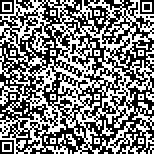下载中心
优秀审稿专家
优秀论文
相关链接
摘要

随着社会经济快速发展及人口增长,中国木材供需矛盾突出,对外依存度高。面对有限的土地资源,迫切需要更为高效、高质量地培育森林资源,在定向培育和集约经营等的各个环节实现培育技术精准化。现代遥感技术所构建的多平台、多角度、多模式立体观测体系及定量分析方法是森林精准培育的关键技术。以遥感技术为核心所构建的从土壤类型分析、土地适应性评价、生态环境模拟到林木育种、灌溉施肥、林木长势监测、病虫害防治等一体化、精准化的森林精准培育新体系,将全面支撑现代林业的整体提质增效和森林质量精准提升。本文首先介绍了RGB相机、多光谱、高光谱、激光雷达、热红外和荧光传感器在森林精准培育中应用现状,并对其应用特点及测量指标进行了综合比较;然后,重点介绍了遥感在林木良种选育、营养胁迫监测诊断及水肥精准喷灌以及森林病虫害防治与健康评估这3个森林精准培育重要方向上的应用,并分析了各应用方向的共性需求;最后,从3个方面,即多源遥感信息融合,人工智能、物联网及3S技术集成,以及遥感数据与生理生态模型和辐射传输模型等的集成应用,分析了未来遥感技术在森林精准培育中的发展趋势及应用前景。
With the rapid development of the society and economy as well as the growth of population, the contradiction between our country's timber supply and demand is still prominent, and its dependence on foreign countries is high. Faced with limited land resources, there is an urgent need to cultivate forest resources more efficiently and with high quality, and to apply precision silviculture technologies in various links such as directive breeding and intensive management. The multi-platform, multi-angle, multi-mode three-dimensional observation system and quantitative analysis method constructed by modern remote sensing technology are the key technologies for precision silviculture. The integrated and accurate new precision silviculture system, built with remote sensing technology as the core, from soil type analysis, land adaptability evaluation, ecological environment simulation to tree breeding, irrigation and fertilization, forest growth monitoring, pest control, etc., will fully support the overall quality and efficiency improvement of modern forestry as well as the precise improvement of forest quality. This review article first introduces the application status of RGB cameras, multispectral, hyperspectral, LiDAR, thermal infrared and fluorescence sensors in precision silviculture, and makes a comprehensive comparison of their application characteristics and measurement indicators; then, focuses on the use of remote sensing in the three key application directions i.e., high-quality species selection, monitoring and diagnosis of nutrient stress, accurate water and fertilizer sprinkler irrigation, as well as the analysis of the common needs of each application direction; finally, from three aspects, i.e., multi-source remote sensing information fusion, artificial intelligence, Internet of Things and 3S technology integration, and the integrated application of remote sensing data with physiological and ecological models and radiation transmission models, the development trend and application prospects of future remote sensing technology in precision silviculture are analyzed.

